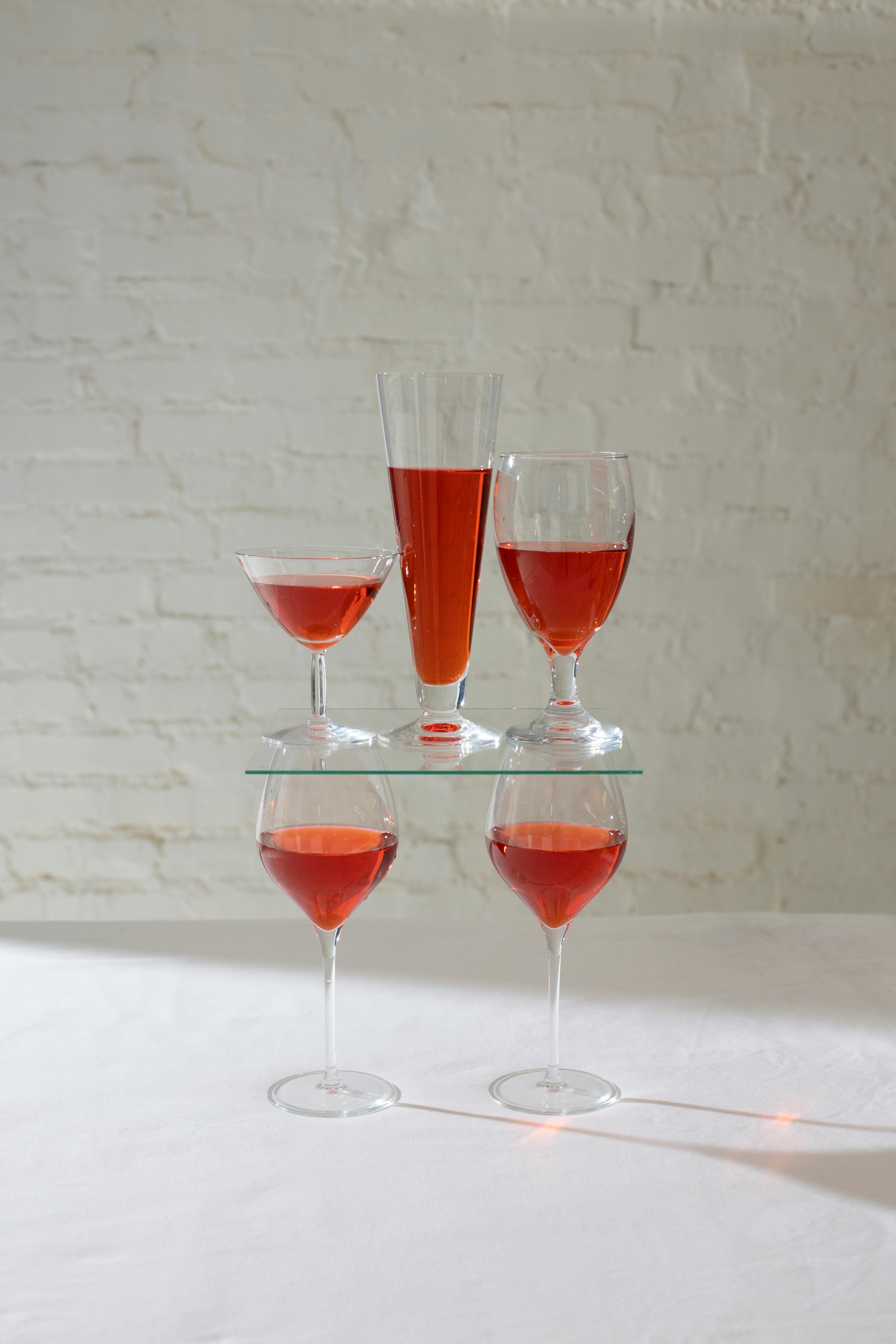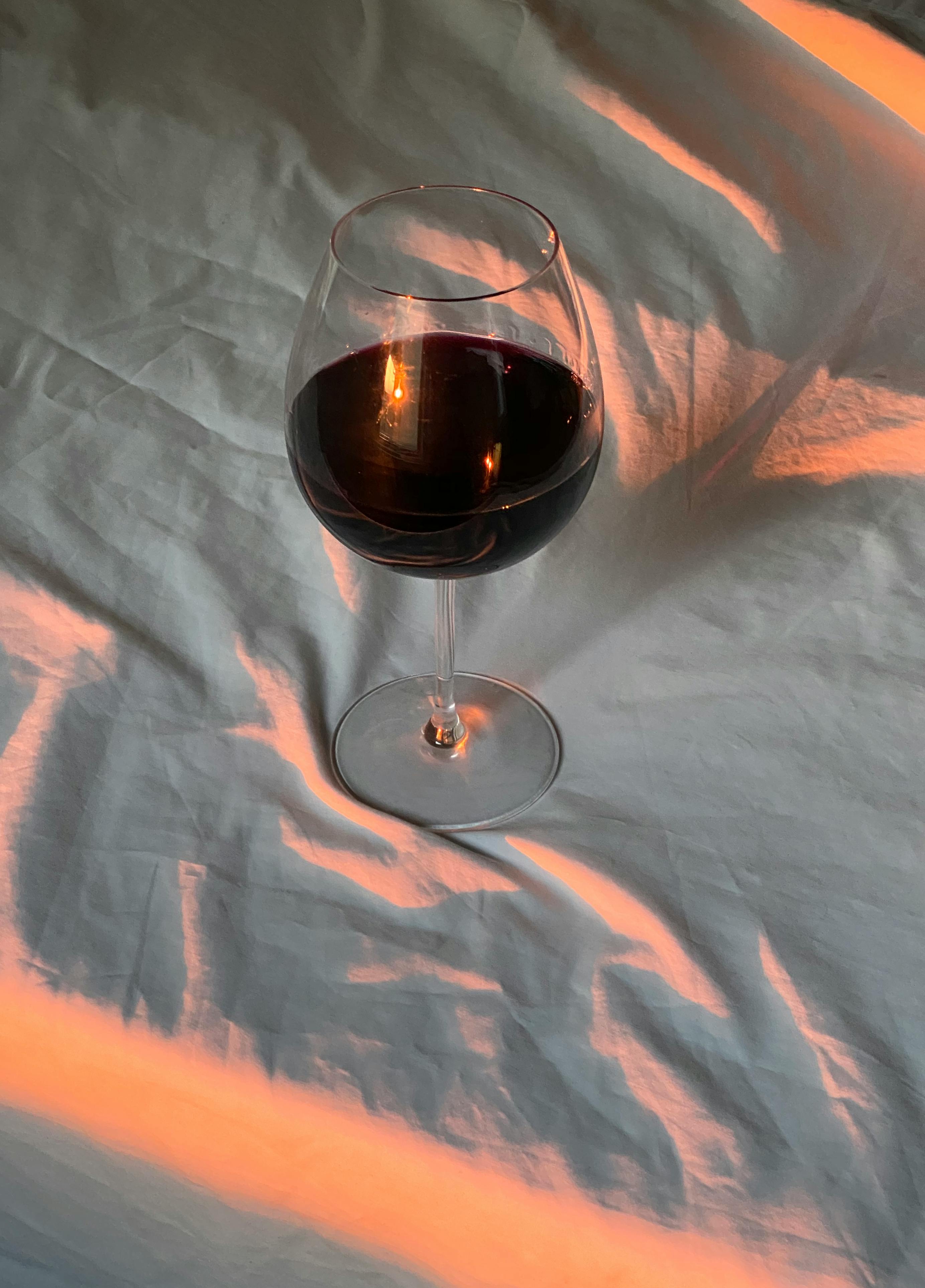What is the difference between red and white wine?
Wine is made from different types of grapes, and the color of a wine is determined by the type of grape used in its production. Red wines are typically made from darker-skinned grapes, while white wines are made from lighter-skinned grapes. There are also many different styles of both red and white wines, each with its own unique characteristics.
While both red and white wines can be enjoyed young or aged, red wines often have bolder flavors that can improve as they age. White wines tend to be more delicate and subtle in flavor, although some will become more complex when aged. The tannin content in wine is also affected by the type of grape used; red wines usually have higher levels of tannins than white wines.There are two main types of wine: red and white. Red wine is made from grapes with red or black skin, while white wine is made from grapes with green or yellow skin. Red wines typically have a fuller body, higher tannin levels, and deeper color than white wines.
White wines come in a range of styles including dry, semi-dry, sweet, sparkling, and fortified. Popular examples of white wines include Chardonnay, Sauvignon Blanc, Riesling, Pinot Grigio and Moscato. These wines are usually lighter in body and color than red wines and have lower alcohol levels.
Red wines also come in a variety of styles including dry, semi-dry, sweet and fortified. Popular examples of red wines are Cabernet Sauvignon, Merlot, Pinot Noir, Syrah/Shiraz and Zinfandel. These wines tend to have bolder flavors than white wine and higher tannin levels that give them a more full-bodied taste.
Contents
Color
The color of red wine is typically a deep or dark red, while white wine has a light yellow or straw-like color. Red wine can range in color from a light purplish-pink to a deep red and even almost black. White wines, on the other hand, can have colors such as yellow, greenish-yellow, golden, and even amber.
Alcohol Content
Red wines generally have an alcohol content of 9 to 16 percent by volume. White wines usually have alcohol content ranging from 8 to 14 percent by volume. Generally speaking, white wines tend to be slightly lower in alcohol content than red wines.
Grape Varieties
The most commonly used grape variety for making red wine is Cabernet Sauvignon, followed closely by Merlot and Syrah/Shiraz. For white wines the most popular variety is Chardonnay, followed by Sauvignon Blanc and Riesling.
Tasting Characteristics
Red wines are usually tannic and fruity with flavors such as blackcurrant, cherry, plum and raspberry being common in many varieties of red wine. White wines tend to have more delicate flavors with notes of citrus fruits such as lemon or lime being common in many varieties.
Different Varieties of Red and White Wine
Wine comes in many different varieties, and the two most popular types are red and white. Red wine is typically made from dark-colored grapes, such as Cabernet Sauvignon and Pinot Noir. The grapes used to make red wine are fermented with the skins on, which gives the wine its deep red color. White wines are made by fermenting pale-colored grapes, such as Chardonnay and Riesling. The juice of these grapes is extracted before fermentation, resulting in white wines that vary in flavor and aroma.
Some of the most popular varieties of red wine include Merlot, Cabernet Sauvignon, Pinot Noir, Syrah/Shiraz, Zinfandel, and Malbec. These wines can be light-bodied or full-bodied depending on the grape variety used and the winemaking techniques employed. Popular white wine varieties include Chardonnay, Sauvignon Blanc, Riesling, Pinot Grigio/Gris, Moscato/Muscat, and Gewürztraminer. These wines range from dry to sweet depending on the grape variety used.
Wine lovers can also opt for blends of different grape varieties to create unique flavors. Blends are created by mixing two or more different grape varieties together during fermentation or aging. For example, a Meritage blend would be a combination of Cabernet Sauvignon and Merlot while a Bordeaux blend would be a combination of Cabernet Sauvignon and Merlot plus other grape varieties such as Petit Verdot or Malbec.
How to Taste Red and White Wine
Tasting wine is more than just enjoying its flavor; it’s also about assessing its quality. Whether you’re exploring a red or white variety, follow these steps to ensure you get the most out of your tasting experience.
Before you begin, make sure the wine is at the correct temperature for tasting. Reds should be served at room temperature or slightly warmer, while whites should be chilled closer to 45°F. Swirl the wine in the glass to aerate it and release its aromas, then take a few moments to observe its color and clarity.
Next, bring your nose close to the glass and inhale deeply. Pay attention to the different scents you can detect—these are known as “aromas” or “bouquets”—and make note of them. Then, take a small sip of wine and let it linger on your tongue before swallowing it. Assess how sweet or dry it is and whether it has any tannins that give it a bitter aftertaste.
Finally, consider how balanced and complex the flavors are. Is there an enticing finish that leaves you wanting more? After taking all these factors into account, you may decide if this is a wine worth buying again!
Aging of Red and White Wine
Wine aging is a process where wine is stored in barrels or bottles over time. The aging process can vary depending on the type of wine, such as red or white. Red wines tend to be aged longer than white wines due to the tannins in red wine that need more time to soften and integrate with the other flavors. Red wines are typically aged for 8 months to two years before being released for sale. During this period, the wine develops complexity and a more balanced flavor profile. White wines are typically aged for three to nine months depending on the desired flavor profile. During this period, the wine develops a smoother texture and highlights its fruity notes.
When aging white wines, care must be taken not to let them become too oaky or too neutral in flavor as this can cause a flat taste. For red wines, oak aging adds complexity and depth of flavor that can take some time to develop fully. Barrels used for aging red wines are usually made of either French oak or American oak which will affect the final taste of the wine. Both types of oak impart different flavors and aromas that add complexity to the finished product.
For both types of wines, temperature control is important during aging as it helps ensure that chemical reactions occur at the desired rate and prevent unwanted bacteria growth. The ideal temperature range for storing both red and white wine is between 55-60°F (13-16°C). Lower temperatures will slow down the chemical reactions while higher temperatures will speed them up, potentially leading to an undesirable outcome such as off-flavors or aromas in the finished product.
In summary, red and white wines require different amounts of aging time due to their respective qualities such as tannins in reds or fruity notes in whites. The type of oak used for barrel aging can also affect the resulting flavors and aromas in both types of wine while temperature control helps ensure consistent results during storage.

Food Pairing with Red and White Wine
Wine and food pairing is an art, but that doesn’t mean it needs to be complicated. Matching the right type of wine with the right type of food can take a meal from basic to extraordinary. Red and white wines each have their own unique flavor profiles, making them better suited for certain dishes.
When it comes to red wines, many are characterized by their robust tannins and high acidity. This makes them a great choice for dishes that are rich or fatty, such as steak, roast beef, lamb, or game meats. They also work well with tomato-based sauces or stews.
White wines on the other hand tend to be light and fruity in flavor. This makes them a great accompaniment for lighter foods such as fish, poultry, salads, and vegetarian dishes. They are also excellent with creamy sauces such as Alfredo or cheese sauces like Béchamel.
Whether you’re looking for a red or white wine pairing for a special dinner or just want to try something new at home, there’s sure to be something that’s perfect for your next meal!
Health Benefits of Red and White Wine
Both red and white wines are known to provide certain health benefits due to the presence of antioxidants. Red wine is made from dark-colored grapes, which contain a higher concentration of antioxidants compared with white wine. Red wine has been linked to a lower risk of heart disease, diabetes, and stroke. It may also help reduce inflammation and protect against certain types of cancer. White wine contains fewer antioxidants than red wine, but it still offers some health benefits. Studies have found that white wine may help reduce the risk of depression, improve cholesterol levels, and reduce the risk of developing Alzheimer’s disease.
When consumed in moderation, both red and white wines may offer some potential health benefits. However, it is important to remember that excessive alcohol consumption can have serious adverse effects on your overall health. Therefore, it is important to consume alcohol responsibly and drink in moderation to ensure that you are getting all the potential benefits without any risks or adverse effects on your body.
Storing Red and White Wine
When it comes to storing red and white wine, there are some key considerations to ensure that your bottles age properly and remain in top condition. Both types need to be stored in a cool and dark place, away from any direct sunlight or intense heat. Temperature should be kept between 10 and 18°C (50-65°F), with the optimal range being 12-14°C (55-60°F). Red wines can also benefit from an increased humidity level of around 65%, while white wines should have a lower level of approximately 50%.
It’s also important to store your bottles on their side so that the cork remains moist. If it dries out, air can enter the bottle, thus spoiling the wine. If you have a large collection of wine bottles, it’s recommended that you invest in a specialized wine storage system to ensure that all of your bottles are kept at the ideal temperature and humidity level.
Another important factor to consider is vibration. Vibrations can cause the sediment found in aged red wines to become suspended in the liquid, thus altering its flavor profile. If this is a concern for you, make sure that your storage area is away from any sources of noise or vibration such as washing machines or traffic outside.

Conclusion
In conclusion, red and white wines have different attributes that make them unique. Red wine is darker in color, is made with dark-skinned grapes, and is typically aged longer than white wine. It also has higher levels of tannins and polyphenols, which give it a robust flavor and fuller body. White wine is lighter in color, made with lighter-skinned grapes, and generally has lower levels of tannins and polyphenols. It also has a much longer shelf life than red wine. Ultimately, the differences between red and white wines depend on the type of grape used to make them as well as the type of aging process used to produce them. Whether you prefer one over the other will come down to personal preference.
No matter your choice, however, both types of wines can be enjoyed in moderation for their unique flavors and aromas.
0 Comments